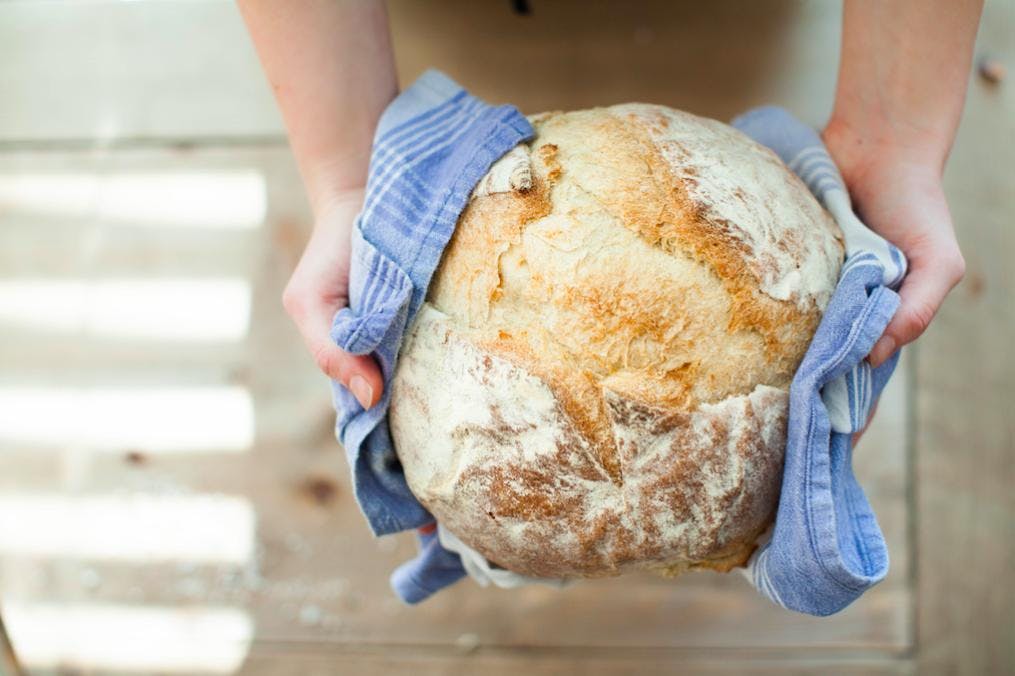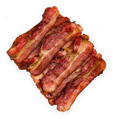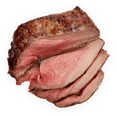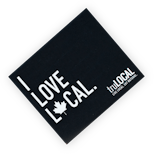
Guide to Buying Healthy Bread
When it comes to eating well and making the best choices, the simplest thing to do is focus on eating whole foods in their whole format, or foods that are simply one ingredient. Eating whole foods can be easier said than done, and some foods are definitely more difficult to cut out than others! Let's face it, bread is delicious. Bread has been a favourite in countries all over the world, and it's definitely not going away anytime soon. It is important to understand how bread is made and the different types available to ensure you are making the best choice when indulging!
White vs. Wheat vs. Whole Wheat
A grain of wheat in its natural form contains three edible parts; the germ, endosperm, and the bran. Each layer contains different integral nutritional components of the grain; the germ contains B vitamins, some protein, and minerals; the endosperm contains starchy carbohydrates, proteins and small amounts of vitamins and minerals; and the bran layer contains antioxidants, B vitamins, and fiber. When a grain of wheat is made into flour it can be done one of two ways; by grinding the whole grain, all parts intact, to make whole wheat flour or by removing the bran and germ to make refined wheat flour. Because the bran and the germ contain most of integral nutrition components of the whole grain, many of the vitamins, mineral, and phytonutrients are lost in the process of many refined flours. In fact, without the bran and germ, about 25% of a grain’s protein is lost, and at least seventeen key nutrients are greatly reduced. Therefore manufacturers will add back some vitamins and minerals to enrich refined grains, so refined products still contribute valuable nutrients.
However, where a little bit of confusion lies is in the fact that there is a strain of wheat called “white wheat” in which the bran is lighter in color and milder in flavor, and so when the whole grain of “white wheat” is ground into flour it is still considered whole grain flour (because the whole grain was included), although it might be white in colour. It might seem a little confusing, but any type of wheat (regular or white) in which the whole grain is made into flour is considered whole grain flour, while if the germ and bran have been removed it is considered refined flour, or enriched flour if nutrients have been added back in.
In addition to wheat flours, there are many other types of flours and processing terms that have become marketing buzzwords, such as multigrain, stone-ground, or gluten-free so let’s have a look at some of the most common to see if they are worth the hype.
Common Bread Buzzwords
- 100% Wheat: This implies that the bread has been made with only wheat as opposed to another grain, or a combination of grains. However, this does not tell is whether or not the bread was made of whole grain flour or refined flour.
- Multigrain: This suggests that the bread was made of flour from multiple types of grains, such as wheat, spelt, rye and/or barley. In addition to multigrain, similar terms might include 7-grain or 12-grain, however, this does also not specify if the flour was whole grain flour or refined flour.
- Whole Wheat: This suggests that the bread was made of whole grain wheat flour including the germ, endosperm and the bran. This is ideal as it ensures the nutritional components were still in tact when the flour was made.
- Whole Grain: Much like whole wheat, the term whole grain implies that the germ, endosperm and the bran were all present in the flour. The difference is simply that this does not limit the bread to containing wheat, as it can contain any grain flour, or combination of grain flours, including spelt, rye, barley, oats, millet, etc…
- Ancient Grains: Although there is no official definition of the term ancient grains, it is loosely defined as grains have been largely unchanged over the last several hundred years, or those that Western culture has ignored until recently. These typically include kamut, spelt, buckwheat, sorghum, teff, millet, quinoa, amaranth and less common strains wheat. A bread made of ancient grainswould simply be made of the flours of these grains, however the term does not specify if the flour was whole grain flour or refined flour.
- Gluten-Free: Gluten is a protein structure found in certain grains, however there are many grains that do not contain gluten such as buckwheat, rice, corn and quinoa, so a gluten-free bread is simply made of flours from gluten-free grains.
- Enriched: This might sound like a good thing, but enriched flours are typically refined flours that have been stripped of their germ and bran and therefore stripped of vital nutrients, phytonutrients, and fibre. Therefore enriched flour is simply refined flour that has had vitamins and mineral added back that were lost during the milling process.
- Stone-Ground: This is in reference to how the grain itself was milled into flour. The term stone-ground indicates that the grain was intact when it was turned into flour (whole grain), as some commercial whole grain flours are made by separating the parts of the grain and putting them back together, which is less than ideal.
- Sprouted Grain: This refers to the way the grains were prepared before the flour and bread were made. Sprouted bread is made from whole grains that have been allowed to sprout (or germinate), before being milled into flour. Sprouted grain are by necessity whole grains, since you can not sprout refined flour. The sprouting process helps to eliminate anti-nutrients and make the grains more easily digested when consumed.
Not All Bread is Created Equal
As with any food, the ingredients a food contains have a huge impact on its nutritional value, however so does the way a food is prepared. Consider a simple example; a white potato can be made into both a baked potato or deep fried in vegetable oil to make chips. Although these foods are made of the same ingredient, potato, they are not nutritionally equivalent. So, it is important to note that there is a difference between real bread and common refined grocery store bread.
Technically speaking, the only ingredients required to make bread are flour, water, and salt. Contrary to popular belief, yeast is not a necessary ingredient for bread making. In the traditional bread making process, flour and water are combined to create a ‘starter’ that reacts with wild yeast and lactobacilli bacteria present in the air, which is left to slowly ferment, which helps the bread to rise before transferring it to an oven to bake. This process is referred to as sourdough bread. This benefit to this method is that the sourdough starter produces lactic acid which helps to naturally ferment the dough, the same way bacteria ferments yogurt, sauerkraut, pickles, kimchi, and other fermented foods, which is said to “pre-digest” the grains, remove anti-nutrients, increases the content of beneficial bacteria in the flour, and therefore helps to make the bread more easily digested. However, because the process of making sourdough bread can take several days, today, most commercial breads are made with domesticated active-dry yeast or baker’s yeast. Doing so helps to speed up production time, which is simpler for commercial use and mass production, and easier for bakers to use and store, however in doing so the natural fermentation and leavening process does not allow for the same health benefits.
Things to Avoid
When it comes to grocery store breads, it is important to look away from the buzzword covered labels and focus on the ingredients list to ensure you are buying the best quality bread you can. Many common brands will include unnecessary ingredients that can easily be avoided.
- Refined Flours: Opt for whole grain flours over enriched or bleached flours to ensure you are getting the most natural occurring and nutritious version of flour.
- Sugar: Unless you are buying a sweet loaf (i.e. – cinnamon raisin), there is no need for sugar or sweeteners in bread as naturally leavened bread does not require sugar to rise. If you are buying bread made of commercial yeast, some bread will contain a small amount of sugar, which helps to activate the yeast, so simply ensure the label contains less than 1 grams of sugar per serving.
- Vegetable Oils: There is no need for the inclusion of oils of any kind in breads, so it is best to avoid them altogether. Some brands will use vegetable oil on their equipment during the bread making process, which is sometimes indicated on the label, however this negligible amount would be acceptable.
- Sodium: Salt is an important ingredient in the sourdough bread making process, however there is no need for an excessive amount of sodium. Anything under 200mg of sodium per serving would be ideal.
- Preservatives: You should be able to pronounce all of the ingredients in your bread. Although this might sound difficult to do with grocery store brands, it is possible, it might just take a little extra time spent reading labels in the bread aisle.
The Best Bread Options
Although it might seem more than impossible to find healthy bread options, I can assure you it is fully possible. When it comes to the best options, here is a simple guide to buying healthy bread:
1. Sourdough Bread
Sourdough bread will always be the very best option as it ensures the bread was made with whole grains, wild yeast and was naturally leavened. This ensures that the bread contains all of the nutritional benefits of the grain and is naturally fermented making the bread more easily digested by the body. Finding true sourdough bread is easiest done by visiting a local farmers market or bakery, just be sure to ask the baker if you are unsure. Some grocery stores might carry sourdough bread, but be sure to read the ingredients list and ensure is made with flour, water and a sourdough starter or sourdough culture or cultured flour starter, as the ingredients should not contain yeast in true sourdough.
2. Sprouted Grain Bread
Sprouted grain breads would be the next best option to sourdough, and they are more easily found in health food and grocery stores. Look for an ingredients list with minimal ingredients including sprouted grains (multiple types of grains is fine), bacterial culture or yeast, water and salt. In some cases these breads are kept in the freezer sections of grocery stores to ensure they don’t go off too quickly (they don’t contain preservatives after all).
3. Whole Grain Bread
If sourdough or sprouted grain breads are not available to you, at the very least ensure that you are choosing a whole grain bread. This can be a wheat bread, multigrain bread or ancient grain bread, just ensure that a whole grain flour was used to make the bread. Be sure to read the label to make sure the bread does not contain any added sugars, oils or excess sodium, however the inclusion of any nuts or seeds would be just fine.
Article By: Stephanie Kay Nutrition
Posted on
September 14th, 2018







